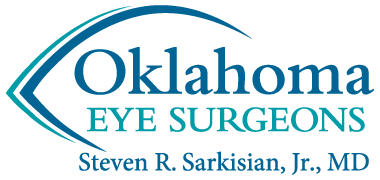Cataracts
If you are age 65 or older, you probably have cataracts. However, they may not have progressed to the point that they affect your vision. As we age, proteins within the eye’s lens naturally begin to clump together, causing the lens to cloud. This clouding is called a cataract. Cataracts prevent the lens from properly focusing light which results in blurry vision and dull colors. When cataracts begin to limit your ability to perform everyday tasks, such as driving and reading, it’s time to consult Oklahoma Eye Surgeons to discuss your cataract surgery options.
LEARN MORE ABOUT NEW LASER CATARACT SURGERY.
What are some common cataract symptoms?
Cataracts generally develop so slowly that many people do not realize how much their vision has changed until symptoms begin to affect their normal lifestyle.
Cataract symptoms may include:
- Difficulty driving at night
- Difficulty seeing distant objects
- Blurry vision or dim vision
- Sensitivity to light and glare
- Halos around lights
- Dull, washed-out colors
CHECK OUT OUR CATARACT & ASTIGMATISM SELF-ASSESSMENT.
What happens during cataract surgery?
For those with cataracts, surgery is the only way to restore clarity. During this approximately 15-minute procedure, your surgeon will remove the clouded lens and position a clear intraocular replacement lens (IOL) in its place. Cataract surgery is an outpatient procedure, allowing you to return home shortly after. Vision starts to improve immediately, with complete recovery in just a few days.
Which IOL is right for me?
There are a variety of replacement lenses options, each designed to correct vision in a different way. When it comes to choosing your IOL, consider the kind of vision you want to enjoy after surgery.
Monofocal IOL: Would you be happy with restoring focus at one distance and wearing glasses for clarity at other distances? Then a monofocal IOL may be just what you need.
Lifestyle IOL: Do you need clearer vision at multiple distances with less dependence on glasses? Or are you looking to correct both cataracts AND astigmatism in one convenient procedure? In these cases, a lifestyle lens may help your achieve your vision goals.
Based on your eye health and vision needs, your doctor will help you select the best IOL.
